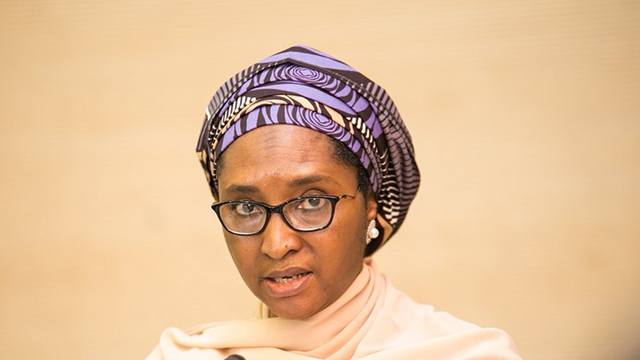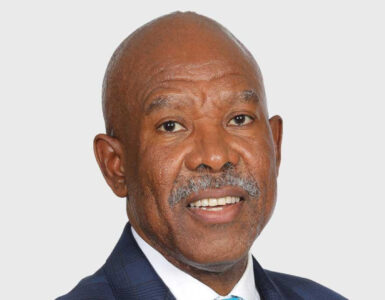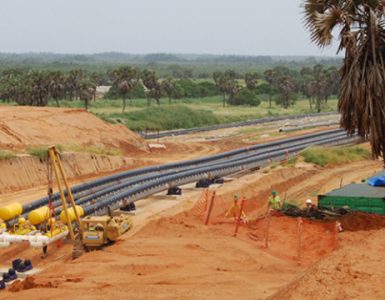Figure 1: Real GDP Growth and Inflation in Nigeria (2016-2024)
Sources: IMF 2019, Nigeria 2019 Article IV Consultation Report. Note: (*) Figures from 2019 onwards are projections from the IMF, 2019.
This recovery in real GDP growth has been assisted by the Economic Growth and Recovery Plan (ERGP) for 2017 to 2020 which the Federal Government of Nigeria implemented in 2016 aimed at assisting the economy respond to fluctuating oil prices and diversifying through public-private partnerships (PPPs)[3]. Nigerian oil prices have also begun improving from USD 44.0 per barrel in 2016 to USD 71.0 per barrel in 2018, even though they have not reached their pre-2014 levels[4]. Therefore, a combination of the ERGP interventions and the recovery in oil prices have assisted the Nigerian economic recovery with real GDP projected to increase from an annual average of 0.4% from 2016 to 2018, to 2.1% in 2019[5]. This is mainly due to improvements and investment in the manufacturing and services industries, as well as spill overs from stable and increasing oil prices.
Figure 2: Sources of Government Revenue in Nigeria (2016-2024)
Sources: IMF 2019, Nigeria 2019 Article IV Consultation Report. Note: (*) Figures from 2019 onwards are projections from the IMF, 2019.
The FGN’s has maintained a fiscal deficit which has widened from -NGN 4.1 trillion (-2.8% of GDP) in 2016 to -NGN 5.8 trillion (-4.0% of GDP) in 2018[6]. The deficit has widened due to increased government spending as part of implementing the FGN. Total government spending declined by -7.8% in 2016 because of the persistent decline in government revenue and the recession, which reduced government revenue by -21.4% due to a -33.7% decrease in oil revenue and a -11.0% in non-oil revenue[7]. During 2016 the FGN reduced recurrent expenditure on goods and services, salaries and monthly overheads, and other current expenses by -12.9% and cut capital expenditure by 0.8%[8]. In response to the recession the FGN implemented its ERGP and increased spending by an annual average of 29.1% mainly by increasing capital expenditure by an annual average of 71.9% and recurrent expenditure by 32.9% in 2017 and 2018[9]. However, this public spending has been mainly financed through public debt due to the persistent and rising fiscal deficit.
Figure 3: Government Revenue and Expenditure in Nigeria (2016-2024)
Sources: IMF 2019, Nigeria 2019 Article IV Consultation Report. Note: (*) Figures from 2019 onwards are projections from the IMF, 2019.
As a result of increased public spending to support economic recovery, the FGN’s debt increased from an average of 25.7% of GDP from 2016 to 2018, to a projected 30.1% of GDP in 2019[10]. The FGN has increased its external borrowing and depreciation of the NGN has also contributed to the increased public debt. External public debt increased from an annual average of 6.4% of GDP (approx. USD 25.0 billion) from 2016 to 2018, to a projected 8.7% (approx. USD 38.6 billion) in 2019[11]. As a result, debt-servicing costs have increased from an annual average of NGN 1.7 trillion (approx. 22.0% of total government revenue) from 2016 to 2018, to NGN 2.3 trillion (approx. 23.2% of total government revenue)[12]. Fortunately, the FGN has a relatively small portion of external public debt and its public debt remains sustainable in spite of the increased public debt[13]. In the forward-looking medium-term from 2020 to 2024 as real GDP growth recovers and the FGN realises returns on its current public investment, public debt should remain sustainable.
Figure 4: Government Expenditure Composition in Nigeria (2016-2024)
Sources: IMF 2019, Nigeria 2019 Article IV Consultation Report. Note: (*) Figures from 2019 onwards are projections from the IMF, 2019.
Real GDP growth is projected to continue recovering from 2.1% in 2019, to an annual average of 2.6% from 2020 to 2024[14]. Over the next two years of the ERGP, the FGN aims to increase capital spending by at least 30.0%[15]. Therefore, the FGN is projected to increase public spending growth from 8.0% in 2019, to an annual average of 10.8% from 2020 to 2024[16]. This will be largely driven by continued public investment growth as real GDP recovers in the medium-term.
Figure 5: Gross Government Debt in Nigeria (2016-2024)
Sources: IMF 2019, Nigeria 2019 Article IV Consultation Report. Note: (*) Figures from 2019 onwards are projections from the IMF, 2019.
Capital expenditure is projected to continue growing from 10.6% in 2019 to an annual average growth of 10.0% from 2020 to 2024; whereas recurrent expenditure is projected to moderate from 16.1% in 2019 to an average of 8.9%[17]. This is countercyclical fiscal policy by the FGN despite the slightly elevated recurrent expenditure. In 2019 recurrent expenditure increased mainly increased by public spending on to the general elections, and in the forward-looking medium-term recurrent expenditure will increase due to higher debt-servicing costs which are projected to increase from NGN 2.2 trillion (approx. 18.9% of total government revenue) in 2020 to NGN 5.0 trillion (approx. 27.4% of total government revenue) in 2024[18].
In spite of the sustained public investment which needs to be financed through public debt due to the fiscal deficit, the FGN’s public debt should remain sustainable. The fiscal deficit is projected to widen in nominal terms even though it will narrow relative to GDP. The fiscal deficit is projected to widen from -NGN 8.6 trillion (-4.7% of GDP) in 2019 to an annual average of -NGN 9.1 trillion (-3.8% of GDP) from 2020 to 2024[19]. Public debt is projected to increase moderately from 30.1% of GDP in 2019, to an annual average of 33.7% of GDP from 2020 to 2024[20]. But this will be mainly through increased domestic public debt which is a more prudent fiscal policy considering the Nigerian economy’s exposure to external shocks affecting the NGN exchange rate. Domestic public debt is projected to increase from 22.8% of GDP in 2020 to 28.1% of GDP in 2024[21]. Meanwhile, external public debt is projected to moderate from 8.6% of GDP (approx. USD 56.5 billion) in 2020 to 7.8% of GDP (approx. USD 60.6 billion) in 2024[22]. The rebalancing of public debt towards increased reliance domestic public debt will reduce Nigeria’s exposure to external shocks from a fiscal point of view.
However, the continued reliance on oil export earnings and tax revenue exposes the FGN and the Nigerian economy to external shocks such as volatility in oil prices. There is a need for a more diversified, balanced and sustainable mix of export earnings. Hence the ERGP and the FGN’s focus on supporting diversification through government expenditure and policies aimed at encouraging investment in key focus sectors and economic priority areas. Furthermore, there in a dire need to focus efforts on infrastructure investment and support for non-oil sectors such as manufacturing and agriculture that will strengthen the domestic revenue base. Nonetheless, the FGN has taken the right approach through countercyclical and prudent fiscal policies.
[1] UNCTAD 2019. UNCTADStat Database, United Nations Conference on Trade and Development: Geneva. Available At: https://unctadstat.unctad.org/ [Last Accessed: 18 August 2019].
[2] IMF 2019. Nigeria 2019 Article IV Consultation Report, International Monetary Fund: Washington, D. C. Available At:
https://www.imf.org/ [Last Accessed: 18 August 2019].
[3] IMF 2019. Nigeria 2019 Article IV Consultation Report, ibid.
[4] IMF 2019. Nigeria 2019 Article IV Consultation Report, ibid.
[5] IMF 2019. Nigeria 2019 Article IV Consultation Report, ibid.
[6] IMF 2019. Nigeria 2019 Article IV Consultation Report, ibid.
[7] IMF 2019. Nigeria 2019 Article IV Consultation Report, ibid.; IMF 2017. Nigeria 2017 Article IV Consultation Report, International Monetary Fund: Washington, D. C. Available At: https://www.imf.org/ [Last Accessed: 18 August 2019].
[8] IMF 2017. Nigeria 2017 Article IV Consultation Report, ibid.
[9] IMF 2019. Nigeria 2019 Article IV Consultation Report, ibid.
[10] IMF 2019. Nigeria 2019 Article IV Consultation Report, ibid.
[11] IMF 2019. Nigeria 2019 Article IV Consultation Report, ibid.
[12] IMF 2019. Nigeria 2019 Article IV Consultation Report, ibid.
[13] IMF 2019. Nigeria 2019 Article IV Consultation Report, ibid.
[14] IMF 2019. Nigeria 2019 Article IV Consultation Report, ibid.
[15] IMF 2019. Nigeria 2019 Article IV Consultation Report, ibid.
[16] IMF 2019. Nigeria 2019 Article IV Consultation Report, ibid.
[17] IMF 2019. Nigeria 2019 Article IV Consultation Report, ibid.
[18] IMF 2019. Nigeria 2019 Article IV Consultation Report, ibid.
[19] IMF 2019. Nigeria 2019 Article IV Consultation Report, ibid.
[20] IMF 2019. Nigeria 2019 Article IV Consultation Report, ibid.
[21] IMF 2019. Nigeria 2019 Article IV Consultation Report, ibid.
[22] IMF 2019. Nigeria 2019 Article IV Consultation Report, ibid.


































